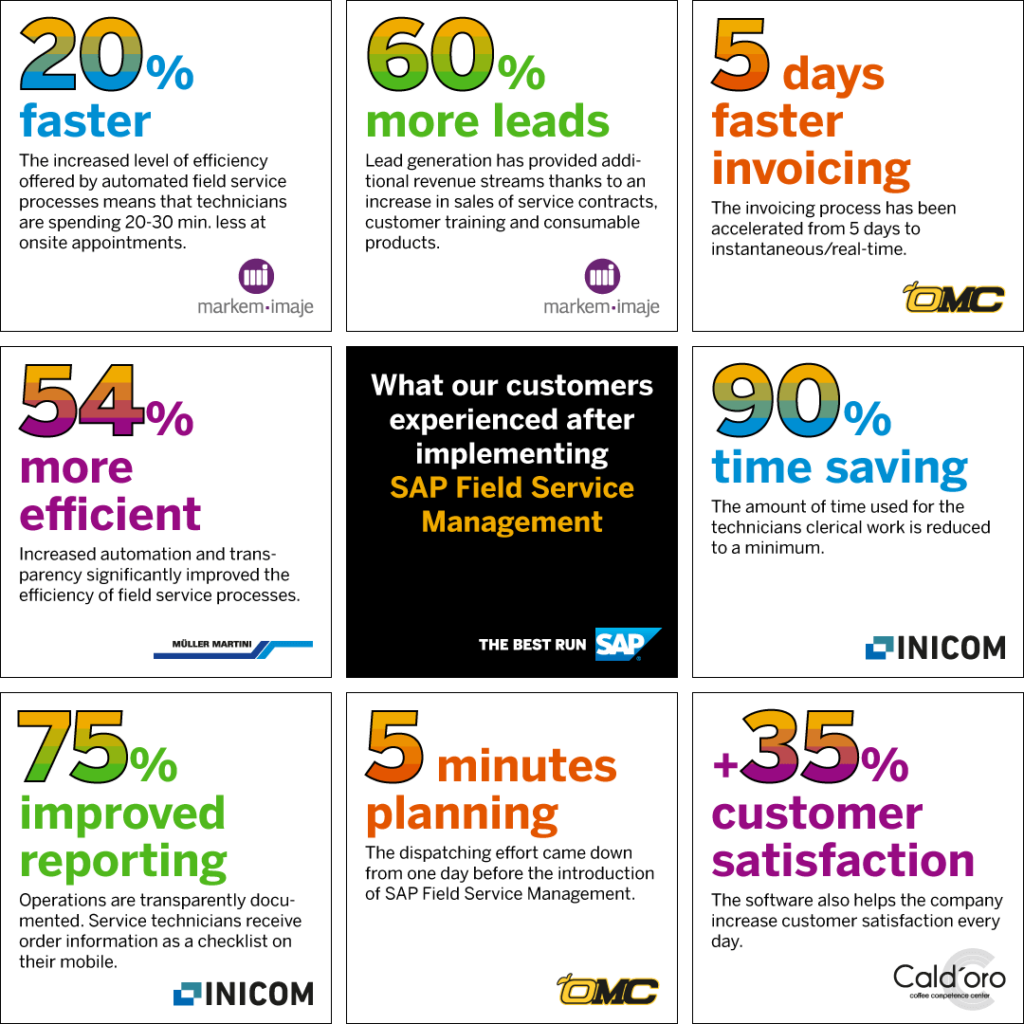Most business leaders understand there’s no such thing as resting on your laurels – you need to be constantly re-assessing and making improvements. A key aspect of being able to do this is understanding what problem areas are. Key performance indicators (KPIs) help companies understand how their business is doing over time. And when you’re in charge of a division that’s responsible for fixing things that go wrong, getting things right is even more important. So when it comes to field service KPIs, which ones should leaders be measuring?
KPIs allow companies to see their performance metrics and understand exactly where they need to improve.
Understanding KPIs can help to:
- Drive profitability
- Provide better service
- Make technicians more productive
- Lower business expenses
KPIs can cover everything, from specific types of profit margins to technicians’ work performances to service profitability.
8 field service KPIs that leaders must track
- Customer satisfaction: Knowing the satisfaction rate of your customers is one of the most important field service KPIs to measure. In FSM, satisfied customers make loyal customers that help you anticipate future profits. Customer satisfaction also leads to customer retention, which is great for the bottom line. According to Aberdeen Research, companies that have a high level of customer satisfaction also have an 89% customer retention level. These companies experienced a 6.1% growth in service revenue and 3.7% growth in overall revenue as well.
- Customer retention: Existing customers are worth more than new ones, as the revenue a company generates from loyal customers can sustain a business. Customer acquisition is often expensive due to the time, resources, and efforts that need to be put into finding new clients. Retaining clients means having ready-to-go word-of-mouth marketing that can help you acquire new customers. Similarly, if you provide great service and your technicians use their power to offer customers new products and services, you’ll be able to increase customer retention.
- Revenue from services: In comparison to total company revenue, it’s important for field service businesses to be able to identify how much revenue comes from services. As many manufacturing businesses shift from being product-based to being service-based, it’s crucial to measure how much revenue is being made from services so that business offerings can be adjusted from there.
- Completed vs. invoiced jobs: If a technician has completed a job, but the customer has not been invoiced yet, you’d want to know, right? Tracking the rate at which service calls are completed compared to those that have been invoiced can let you know whether you should invest in workforce management software and invoice automation to ensure your business receives payments quickly. An unsent invoice after completed work means missing revenue for your business.
- Sales on field service jobs: Salespeople play a crucial role in field service businesses, but techs do, too. Given that field service software equips your techs to become up-sellers and cross-sellers who help give your customers the services and equipment they need to keep their machines running smoothly, it’s critical to keep track of how many sales your techs are making in the field.
- Employee productivity: Knowing how productive your employees are can show you where their skill strengths and weaknesses lie. It can also show you whether more training is required, new techs are needed, or if you need to restructure your current team.
- Employee retention: As with acquiring new customers versus retaining current ones, knowing the rate at which your business is retaining employees is important to your business success. It is usually much cheaper to retain an existing employee than to find, hire, and train a new field service employee. And attracting younger employees will require your company to innovate and adapt to millennials’ changing job expectations.
- Average resolution time: Knowing your business’ first-time fix rate KPI, will help you understand your employees’ productivity levels. Additionally, since first-time fix rates contribute to customer satisfaction, knowing your company’s average resolution time can help you understand how your organization is running on a macro level. On a micro level, understanding how long it takes employees to complete certain tasks will allow you to see where techs are running into problems, and how that can be solved.


